Research Article
Volume 1 Issue 2 - 2018
Who takes care of Neurocritical Patients in Emergency Departments? Exploration Survey
Coordinator Neurovascular Neurointensivist Care, Intensive Care Department, Hospital Juan A. Fernandez Buenos Aires City, Argentina, Staff Physician. Intensive Care Department. Hospital Juan A. Fernandez. Buenos Aires. Argentina, Staff Physician Intensive Care Department, Hospital Parmenio Piñero, Buenos Aires, Argentina, Staff Physician, Head Intensive Care Department, Institute of Oncology Ángel H. Roffo. Buenos Aires, Argentina
*Corresponding Author: Luis Camputaro, Coordinator Neurovascular Neurointensivist Care, Intensive Care Department, Hospital Juan A. Fernandez Buenos Aires City, Argentina.
Received: June 25, 2018; Published: July 02, 2018
Keywords: Neurocritical Patients; Emergency Department
Background
Acute neurological disorders imply a massive burden, being the third cause of death in the modern world, with elevated morbidity and mortality rates. More than 30 years have passed since the creation of neurological specialized intensive care units worldwide. The first text dedicated exclusively to this subject was published in 1983. [1] Since then, education programs for Neurocritical care physicians have been developed. These differ widely in their objectives and methods; nevertheless, there are hundreds of physicians exclusively dedicated to look after patients with this kind of disorders nowadays.
R.S. Howard., et al. Identified most of the pathologies that need to be treated in neurological intensive care units, but some issues were not really addressed, such as who should be in charge of these patients and when and why they should access these specialized areas. [2] Having analyzed effectiveness, costs, and other results regarding the implementation of neurological intensive care units, many authors agree that the presence of an expert or a team of experts in these units improves outcomes. [3,4] Particularly in our country, as in many others, there is an important issue still needed to be ruled out regarding the lack of intensivists. [5] Likewise, cost-effectiveness and cost-usefulness of multidisciplinary teams specifically in charge of treating Neurocritical patients has been broadly demonstrated. [6-9]
On the other hand, prehospital care and initial treatment of patients with acute neurological disorders in emergency departments have not seen the same rapid development and many issues still need to be reviewed and addressed properly. First hours remain crucial in treatment of patients undergoing acute neurological disorders, as risk can be categorized and care strategies executed in order to improve survival quality.
In the light of the current knowledge and irrespective of the reasons, we usually recognize that initial treatment is not always accurately provided in the emergency departments. The aim of this survey, therefore, is to explore who provides initial care, and takes responsibility for decisions regarding diagnosis and treatment of patients suffering from acute neurological disorders in emergency departments.
Material and Methods
We designed an explorative web based survey that includes ten questions regarding hospital location and demographic characteristics, number of patients attending the emergency department daily, availability of specialized physicians and their contribution in diagnosis and treatment of neurological patients and transfer delay to specific healthcare areas, among others. All items had multiple choices or ordinal response formats, with only few questions concluding with ‘other’ option.
During April 2015, the questionnaire was sent by mail and available on the institutional website of Sociedad Argentina de Terapia Intensive (SATI [7] by its Spanish acronym). Physicians and emergency room staff members were invited to participate.
Results
Study population
109 responses were received. Each respondent did not answer all the questions; thus, the percentage of response for each question has been calculated accordingly. Of the 109 responses, 78% (n = 84) were from Argentina (Figure 1).
109 responses were received. Each respondent did not answer all the questions; thus, the percentage of response for each question has been calculated accordingly. Of the 109 responses, 78% (n = 84) were from Argentina (Figure 1).
Among 109 responses, more than half (58, 3%; n = 63) of the respondents attend their practices in cities with over 300.000 inhabitants (Figure 2).
Regarding institutional characteristics, 37% (n = 40) provide more than 200 hospital beds (Figure 3), and mainly belong to public administration (national, state or government ownership) with low teaching hospital status rates, as denoted by university affiliations. (Table 1).
| Teaching hospital status | No University affiliation | State University affiliation | Private University affiliation | |
| Ownership | n | |||
| Private/Proprietary | 30 | 6 | 6 | 42 |
| Community/Voluntary | 0 | 4 | 0 | 4 |
| Government (National) | 13 | 7 | 4 | 24 |
| Government (Provincial) | 24 | 9 | 0 | 33 |
| Government (Local) | 14 | 7 | 0 | 21 |
Table 1: Healthcare centers characteristics regarding ownership and teaching hospital status (absolute values).
In 103 responses, 83,5% (n = 86) informed having less than 20% of its active staff certified as emergency physicians (Figure 4) and most neurology and neurosurgery consultants are either available on call or work only on a part-time basis. (Table 2).
| Medical Specialist | Neurologist | Neurosurgeon | Anesthesiologist | Cardiologist | Infectious Disease |
| Type of employment | |||||
| Full-time | 19 | 14 | 17 | 16 | 6 |
| Part-time | 23 | 2 | 1 | 0 | 6 |
| On call | 34 | 3 | 0 | 2 | 5 |
| Not available | 21 | 0 | 0 | 0 | 1 |
Table 2: Specialist availability at emergency departments (absolute values).
Emergency department activity data
Almost half of the respondents (49,1%; n = 53) assess more than 90 adult patients per day (Figure 5) and 69,2% (n = 74) perceive that less than 20% of these patients have life threatening illnesses that require shock room admittance (Figure 6). Besides, they mostly agree that less than 10% of these critical patients suffer from neurological disorders (Figure 7).
Almost half of the respondents (49,1%; n = 53) assess more than 90 adult patients per day (Figure 5) and 69,2% (n = 74) perceive that less than 20% of these patients have life threatening illnesses that require shock room admittance (Figure 6). Besides, they mostly agree that less than 10% of these critical patients suffer from neurological disorders (Figure 7).
Who takes care of Neurocritical patients?
Half of the 106 responders (50%; n = 53), replied that general practitioners are usually responsible for providing initial assessment of Neurocritical patients in their practice. Only 25, 5% (n = 27) responded that an emergency certified physician is available to provide initial care and in fewer occasions (5, 7%; n = 6) a neurologist is accountable (Figure 8).
Half of the 106 responders (50%; n = 53), replied that general practitioners are usually responsible for providing initial assessment of Neurocritical patients in their practice. Only 25, 5% (n = 27) responded that an emergency certified physician is available to provide initial care and in fewer occasions (5, 7%; n = 6) a neurologist is accountable (Figure 8).
Moreover, initial decisions about treatment are mainly made by a critical care physician, who is frequently the ‘consultant’ with more expertise on a 24 hour-basis (Table 3).
| Medical specialty | Emergency Medicine | Neurology | Neurosurgery | General Practice | Family Medicine | Critical Care | Other |
| Initial treatment decisions | |||||||
| Always | 1 | 1 | 1 | 2 | 1 | 6 | 0 |
| 24 hours | 22 | 14 | 15 | 24 | 4 | 51 | 1 |
| Depending on the case | 10 | 18 | 29 | 13 | 6 | 16 | 2 |
| Depending on the timetable | 5 | 8 | 4 | 5 | 4 | 2 | 1 |
Table 3: Initial treatment decisions by specialist (absolute values).
Patient transfers
After initial care, most Neurocritical patients require either interfaculty or intrahospital transfer for definitive treatment. However, patients may not reach their destination in a timely fashion. Our survey included two questions regarding this issue. Of 106 respondents, only 27% (n = 29) are always able to arrange an intrahospital transfer immediately and almost half of them (47%; n = 50) usually suffer delays of more than 2 hours. Conditions are worse regarding interfaculty transfers (n = 105), in which only 20% (n = 21) can accomplish them within the first 2 hours and 44,8% (n = 47) account for more than 6-hour delay (Figure 9, 10).
Discussion
The aim of this survey was to explore who provides initial care, and takes responsibility for decisions regarding diagnosis and treatment of patients suffering from acute neurological disorders in emergency departments. To our knowledge, there are no previous reports in the literature on this specific scenario in Latin America.
Obtained responses mainly represent large urban hospitals’ emergency departments, although most participants claimed that less than 20% of their active staff is certified as emergency physicians. While board certification is but one of several qualifications to be considered in assessing the quality of a physician's clinical care, it appears that such low rates of specialist care availability at reference centers should be a matter of concern.
Half of the survey respondents replied that general practitioners are usually responsible for providing initial assessment of Neurocritical patients in their practice and initial decisions regarding treatment are mainly made by critical care physicians, and rarely by a Neurosurgeon or Neurologist. The current literature supports a beneficial relationship between the presences of a specialized critical care team (staffed by a neurointensivist) and enhanced patient outcomes. [7,8] Therefore, there is a need to recognize the lack of knowledge and support further training for medical staff attending emergency departments, especially on the subject of Neurocritical patients’ acute care.
We also found out that hospital emergency departments, regardless of the reason, perform fairly poorly in transferring acutely ill patients within a reasonable time frame. Several reports suggest that the problem is widespread and contributes significantly to inefficiencies in healthcare systems; hence further study of this problem is necessary.
The strength of our study is that it reveals the ongoing practice of surveyed physicians regarding attention of Neurocritical patients. It is the first of a kind, exploratory survey and includes responses from health professionals, who are involved in the management of patients with acute neurological disorders in Latin America. Limitations of our study include a restricted generalizability of our results due to a non-random sampling method used for our survey and limited access to physicians contact databases, leading to restricted survey distribution and inability to introduce a survey to larger national and international population (especially outside Argentina). Despite these caveats, the authors believe the data to be an accurate reflection of current practice in Latin America.
Conclusions
Most of the surveyed participants claim that Neurocritical patients in emergency departments are initially assessed by general practitioners and initial decisions regarding treatment are mainly made by critical care physicians. Patient transfer for definitive treatment is often delayed.
The authors recognize the need for, and welcome, further examination of these findings from multiple perspectives and despite the limitations of this survey conclude that further education and training of emergency department physicians, especially those taking care of patients with acute neurological diseases should be encouraged. This survey and its conclusions also include a kindly recommendation for health systems authorities that wish to improve effectiveness when making decisions to invest in Neurocritical care.
References
- Ropper AH., et al. Neurological and Neurosurgical Intensive Care. Baltimore: University Park Press (1983).
- Howard R., et al. “Admission to neurological intensive care: who, when, and why?” Journal of Neurology, Neurosurgery, and Psychiatry 74.3 (2003).
- Diringer MN and Edwards DF. “Admission to a neurologic/neurosurgical intensive care unit is associated with reduced mortality rate after intracerebral hemorrhage”. Critical Care Medicine 29.3 (2001): 635-640.
- Varelas PN., et al. “Impact of a Neurointensivist on outcomes in patients with head trauma treated in a neurosciences intensive care unit”. Journal of Neurosurgery 104.5 (2006): 713-719.
- Krell K. “Critical care workforce”. Critical Care Medicine 36.4 (2008): 1350-1353.
- Chang CW., et al. “Neurointensivist: part of the problem or part of the solution?” Critical Care Medicine 36.10 (2008): 2963-2964.
- www.sati.org.ar
Citation:
Luis Camputaro., et al. “Who takes care of Neurocritical Patients in Emergency Departments? Exploration Survey”. Anaesthesia,
Critical Care and Pain Management 1.2 (2018): 79-85.
Copyright: © 2018 Luis Camputaro., et al. This is an open-access article distributed under the terms of the Creative Commons Attribution License, which permits unrestricted use, distribution, and reproduction in any medium, provided the original author and source are credited.





























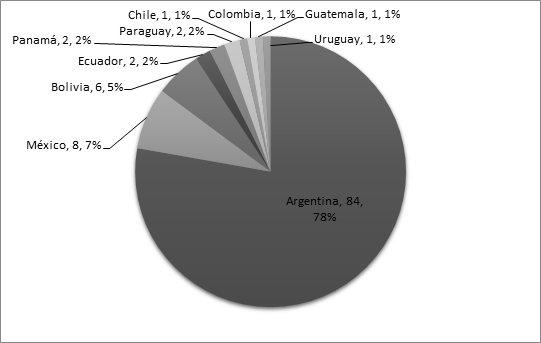
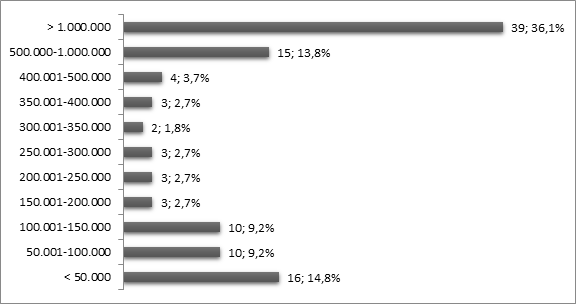



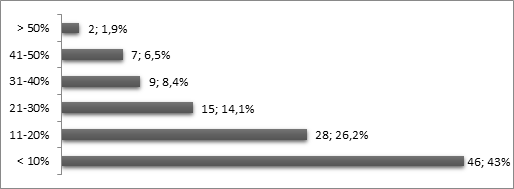

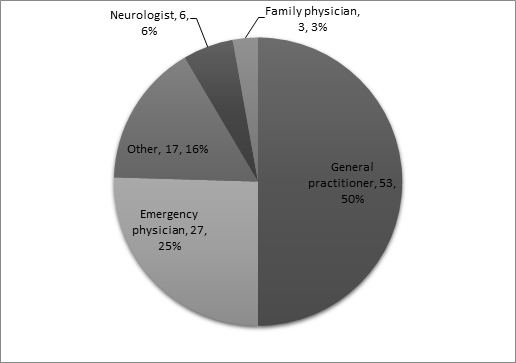
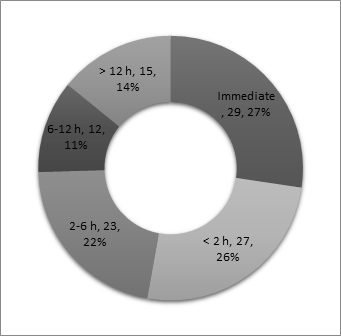
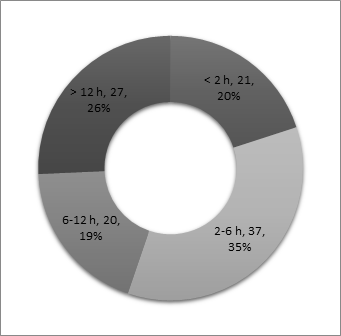
 Scientia Ricerca is licensed and content of this site is available under a Creative Commons Attribution 4.0 International License.
Scientia Ricerca is licensed and content of this site is available under a Creative Commons Attribution 4.0 International License.